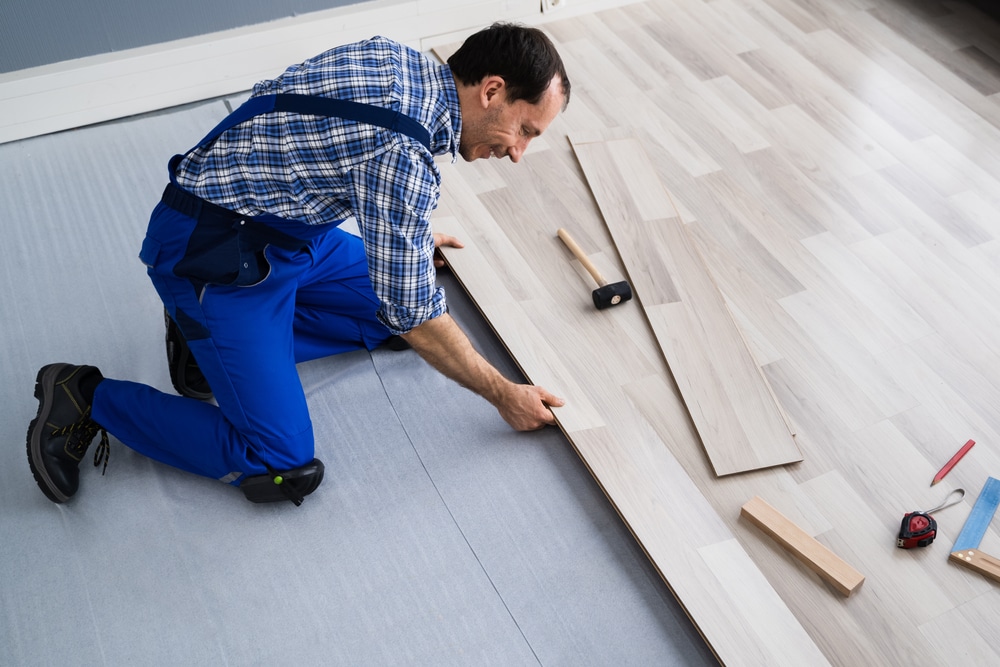Ben Weinstein business owner and investor leads parallel careers in real estate and wholesale flooring distribution. As president and CEO of Lux Flooring, which he founded in 2016 in Lakewood, New Jersey, he oversees national operations supplying LVT, SPC, and laminate products to more than 1,000 retail stores, with facilities in Los Angeles, Phoenix, Las Vegas, and Dallas and additional centers planned in Florida, Colorado, and Georgia. He also serves as CEO of Bluerise Group, guiding acquisitions, negotiations, and commercial financing across hundreds of residential units in multiple states. Drawing on vendor relations, logistics, and property management experience, Weinstein’s perspective aligns with practical evaluation of installation systems and their impact on durability. In the context of “Installation Methods That Determine Flooring Lifespan,” his background supports a neutral discussion of floating, glue-down, click-lock, and loose-lay approaches that influence longevity, maintenance, and lifecycle cost.
Installation Methods That Determine Flooring Lifespan
Flooring durability depends on more than the quality of the planks or tiles themselves. How crews install those materials often determines whether a floor will hold up for decades or require replacement after only a few years. For both resilient vinyl and laminate products, installation is not just a finishing step but a system that defines resale durability, maintenance cost, and long-term usability.
An installation method describes how flooring attaches to the surface beneath, the subfloor. Some systems rely on adhesives, while others use mechanical locks or specialized backing to stay in place. This choice dictates how the floor responds to pressure, movement, and changes in temperature or moisture. For wholesalers and installers, method selection carries as much weight as the material itself.
One of the most widely used approaches is the floating floor system. In this method, planks or tiles lock together and rest on the subfloor without the use of adhesive. The design allows the surface to expand and contract naturally in response to temperature or humidity shifts. Laminate in residential settings often uses this approach because it installs quickly and provides a stable surface without permanent bonding.
Glue-down installation takes a different path by adhering each plank or tile directly to the subfloor. This method creates a permanent connection that resists heavy rolling loads and continuous foot traffic without shifting. Although it requires precise placement and thorough subfloor preparation, the added effort yields performance well-suited to high-use environments.
Click-lock mechanisms build on the floating floor idea with edges that snap securely into place. These joints form tight seams, similar to puzzle pieces, that retain their hold under daily use. The system works across many luxury vinyl tile (LVT) and laminate products, offering a versatile option that combines straightforward installation, durability, and broad appeal.
Loose-lay flooring introduces another option. These planks or tiles utilize specialized backing and construction that enable installation without adhesive under specific conditions. Because installers can lift sections individually, loose-lay makes it easy to replace pieces without the need for tools. It also provides convenient access for spaces that require frequent entry beneath the floor, such as offices with wiring or cabling.
Comparisons across these systems reveal apparent differences in their holding power. Glue-down floors remain fixed in place, while floating and loose-lay systems allow more adjustment with environmental changes. Click-lock sits between them, providing a secure fit that adapts modestly to shifts. These contrasts highlight how the choice of installation shapes stability over time.
Repair and replacement options also vary in cost and complexity. Floating and click-lock systems enable installers to remove and replace damaged planks at a low price, while loose-lay systems extend this flexibility with tool-free access. Glue-down floors, in contrast, may require cutting or refinishing surrounding areas to correct a single issue. These differences affect not only convenience but also long-term maintenance budgets.
The correct method depends on the setting. Glue-down systems are suitable for high-traffic commercial spaces, while floating and click-lock floors are best suited for residential environments. Loose-lay options, on the other hand, work well in offices or other areas that require quick underfloor access. This framework helps align the choice of installation with the functional requirements of each space.
The installation method represents more than a technical decision; it guides how suppliers manage product lines and how builders plan projects with durability in mind. Resilient options continue to expand, and laminate remains a major category, so understanding how each system performs helps wholesalers, retailers, and installers anticipate market shifts and new building standards. When these groups judge flooring not only by its appearance or material but also by the installation systems that sustain its value, they keep projects adaptable and competitive over time.
About Ben Weinstein
Ben Weinstein is a Lakewood, New Jersey–based business owner and investor. As CEO of Bluerise Group since 2016, he leads strategic acquisitions, contract negotiations, and property management across hundreds of residential units in several states. He is also president and CEO of Lux Flooring, a wholesale supplier of LVT, SPC, and laminate products serving more than 1,000 retail stores nationwide, with operations in New Jersey and additional facilities in California, Arizona, Nevada, and Texas. He participates annually in The International Surface Event.

